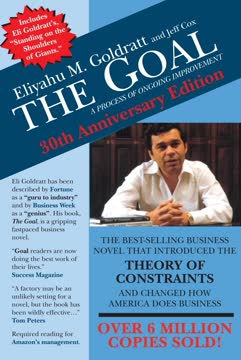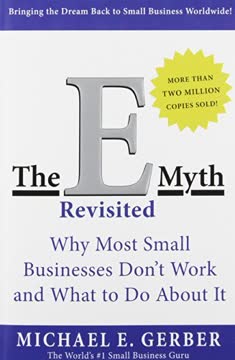重点摘要
1. 捕捉所有引起你注意的事物
你的大脑是用来产生想法的,而不是用来储存它们的。
收集所有未完成的事项。 收集所有占据你心智空间的任务、承诺和想法。这包括个人和职业上的义务,从重大项目到小事琐事。使用笔记本、应用程序或语音备忘录等物理和数字工具将这些想法外化。
养成收集的习惯。 定期清空你的大脑。这种做法可以减少压力和心智杂乱,让你专注于真正重要的事情。通过捕捉一切,你可以释放心智带宽,确保没有任何事情被遗漏。
信任这个过程。 起初,当你面对大量的承诺时,可能会感到不知所措。然而,将所有事情从脑海中释放出来是获得控制和清晰的第一步。记住,你并不是承诺要完成所有捕捉到的事情,只是承认它们的存在。
2. 明确每个事项的预期结果和下一步行动
取得进展的秘诀在于开始。开始的秘诀在于将复杂的任务分解成小的可管理的任务,然后从第一个任务开始。
定义明确的结果。 对于你捕捉到的每个事项,确定“完成”是什么样子。这种清晰度有助于你的大脑专注于实现预期结果,而不仅仅是思考问题。
确定下一步行动。 将每个结果分解成具体的、实际的行动。问自己:“我需要采取的下一步行动是什么?”这一步将模糊的想法转化为具体的、可执行的任务。
- 下一步行动的例子:
- 打电话给约翰讨论项目时间表
- 起草演示文稿的大纲
- 研究即将到来的旅行的航班选项
3. 将提醒事项组织到一个可信的系统中
你产生力量的能力与放松的能力成正比。
创建一个可靠的组织系统。 开发一个结构,使你能够轻松存储和检索信息。这可能包括任务管理应用程序等数字工具或文件夹等物理系统。
按情境分类。 根据任务完成的地点或方式对任务进行分组。常见的类别包括:
- @电脑
- @电话
- @差事
- @家
- @办公室
保持独立的列表。 为不同类型的事项保持独立的列表:
- 下一步行动:立即的、具体的任务
- 项目:多步骤的结果
- 等待中:委托给他人的事项
- 将来/可能:未来的想法
4. 定期审查和更新你的系统
行动自己进入更好的感觉比感觉自己进入更好的行动更容易。
进行每周审查。 每周留出时间来审查和更新你的系统。这种习惯确保你的列表保持最新和相关。
每周审查过程:
- 收集所有松散的纸张和材料
- 处理你的笔记
- 审查之前的日历数据
- 审查即将到来的日历
- 审查行动列表
- 审查项目列表
保持视角。 利用这段时间评估你在不同层次上的承诺,从地面级别的行动到人生目标。这种做法有助于你在管理日常任务的同时保持与更广泛目标的一致性。
5. 对最重要的任务采取行动
运气影响一切。让你的钩子总是抛出;在你最不期望的溪流中会有鱼。
实施两分钟规则。 如果一个任务少于两分钟就能完成,立即去做。这一原则防止小任务堆积并堵塞你的系统。
使用四标准模型选择行动:
- 情境:在当前地点和可用工具下你能做什么?
- 可用时间:在下一个承诺之前你有多少时间?
- 可用能量:你有多少精神和体力?
- 优先级:考虑以上因素,最重要的事情是什么?
信任你的直觉。 一旦你对你的承诺和下一步行动有了清晰的概述,信任你的直觉来决定要做什么。当你的大脑不再被未处理的输入所困扰时,你的心灵会自由地做出直觉性的选择。
6. 掌握无压力生产力的艺术
我们能做的一件事,最幸福的人是那些能做到极限的人。我们可以完全在场。我们可以完全在这里。我们可以……全心全意地关注眼前的机会。
达到如水般的心态。 力求达到一种准备和灵活的状态,就像水适应任何容器一样。这种心态使你能够适当地应对生活中的任何挑战,而不会过度反应或反应不足。
消除心理拖累。 通过捕捉和澄清所有的承诺,你消除了未完成任务和不明确义务所带来的微妙压力。这释放了心智能量,用于专注工作和创造力。
练习结果思维。 定期想象项目和目标的成功结果。这种习惯使你的大脑准备好注意到与预期结果一致的机会和解决方案。
7. 改变你对工作和生活的态度
我怎么知道我在想什么,直到我听到我在说什么?
从管理时间转向管理注意力。 不要试图在每一天中挤入更多的事情,而是专注于有效地引导你的注意力。这种方法认识到能量和注意力,而不仅仅是时间,是关键资源。
接受“下一步行动”的心态。 训练自己和周围的人总是确定推动事情前进所需的下一个实际、可见的行动。这种习惯防止拖延,并保持项目的流动。
培养行动偏好。 养成立即对小任务采取行动的习惯,并迅速决定大项目的下一步。这种积极主动的方法建立了动力和信心。
创建一个低阻力的可信系统。 设计你的组织系统,使其如此简单和愉快使用,以至于你自然会与之互动。捕捉、澄清和审查越容易,你就越有可能保持系统的维护。
最后更新日期:
FAQ
What's "Getting Things Done: The Art of Stress-Free Productivity" about?
- Overview: "Getting Things Done" by David Allen is a guide to organizing tasks and commitments to achieve stress-free productivity. It introduces a system to manage work and life efficiently.
- Main Focus: The book emphasizes capturing all tasks and commitments in a trusted system outside the mind, clarifying actions, and organizing them for review and execution.
- Purpose: It aims to help individuals clear their minds of clutter and focus on completing tasks effectively, providing a structured approach to managing tasks, projects, and responsibilities.
- Target Audience: Ideal for anyone feeling overwhelmed by their workload, from executives to homemakers, offering practical advice to regain control and clarity.
Why should I read "Getting Things Done"?
- Improved Productivity: The book offers practical techniques to enhance productivity by organizing tasks and reducing stress, helping readers focus on what truly matters.
- Stress Reduction: By capturing tasks in a trusted system, it alleviates the mental burden of remembering tasks, leading to a calmer, more focused mind.
- Universal Applicability: The principles can be applied to both personal and professional life, making it a versatile resource for improving organizational skills.
What are the key takeaways of "Getting Things Done"?
- Capture Everything: Collect all tasks, ideas, and commitments in a reliable system to prevent mental clutter and allow for better focus.
- Clarify Actions: Define the next physical action required for each task to prevent procrastination and ensure steady progress.
- Regular Review: Consistent review of tasks and projects is crucial to maintaining control and focus, with a recommended weekly review to update and organize commitments.
How does the GTD system work?
- Five Stages: The GTD system consists of five stages: capture, clarify, organize, reflect, and engage, each designed to help manage tasks efficiently.
- Capture Everything: Collect all tasks, ideas, and commitments in a trusted system outside your head to free up mental space.
- Clarify and Organize: Determine the next action for each task and organize them into appropriate categories for review and execution.
What is the "mind like water" concept in "Getting Things Done"?
- Definition: "Mind like water" is a state of relaxed control where you respond appropriately to any situation without overreacting or underreacting.
- Achieving the State: By capturing, clarifying, and organizing tasks, you can achieve this state, allowing you to focus on the present moment and make better decisions.
- Benefits: This state leads to increased productivity, reduced stress, and a greater sense of well-being, as you are no longer burdened by mental clutter and unfinished tasks.
What is the "Natural Planning Model" in "Getting Things Done"?
- Five Phases: The Natural Planning Model consists of defining purpose and principles, outcome visioning, brainstorming, organizing, and identifying next actions.
- Purpose and Vision: Start by defining the purpose and envisioning the successful outcome of a project, providing direction and motivation.
- Brainstorming and Organizing: Generate ideas and organize them into a coherent plan, identifying the next actions required to move the project forward.
How can "Getting Things Done" help with procrastination?
- Next-Action Clarity: The book emphasizes defining the next physical action required for each task, reducing hesitation and encouraging progress.
- Breaking Tasks into Steps: Allen's method involves breaking down projects into manageable steps, making them less daunting and building momentum.
- Regular Review and Organization: Regular reviews help keep priorities clear and manageable, avoiding the last-minute rush that often results from procrastination.
How does the "two-minute rule" work in "Getting Things Done"?
- Definition of the Rule: If a task can be completed in two minutes or less, it should be done immediately to prevent small tasks from accumulating.
- Application in Daily Life: The rule can be applied to tasks like responding to emails or making quick phone calls, encouraging prompt action.
- Benefits of the Rule: It leads to a significant reduction in clutter and an increase in productivity by quickly clearing minor tasks.
What are some of the best quotes from "Getting Things Done" and what do they mean?
- "Your mind is for having ideas, not holding them." Emphasizes freeing the mind from remembering tasks to enhance creativity and problem-solving.
- "The art of resting the mind..." Highlights the value of achieving a clear mind, free from stress and mental clutter, to enhance productivity and well-being.
- "You can do anything, but not everything." Reminds to prioritize tasks and focus on what truly matters, rather than trying to do everything at once.
How can I implement the GTD system in my daily life?
- Start with Capturing: Begin by collecting all tasks, ideas, and commitments in a trusted system outside your head using tools like notebooks or digital apps.
- Clarify and Organize: Determine the next action for each task and organize them into appropriate categories for review and execution.
- Regular Review: Set aside time each week to review and update your system, ensuring it remains functional and up-to-date.
What tools and systems does "Getting Things Done" recommend for organization?
- In-Baskets and Filing Systems: Use physical or digital in-baskets to capture all incoming tasks and information, and maintain a well-organized filing system.
- Action Lists and Calendars: Maintain action lists categorized by context and use a calendar for time-specific tasks and appointments.
- Digital Tools: Apply GTD principles using modern digital tools like task management apps and digital calendars, integrating them into a cohesive system.
How can "Getting Things Done" be applied in a team or organizational setting?
- Shared Language and Practices: Adopt a shared language and practices for task management, improving communication and collaboration.
- Accountability and Clarity: Define next actions and outcomes clearly to enhance accountability and avoid misunderstandings within a team.
- Cultural Shift: Promote a focus on productivity and efficiency, reducing stress and improving task management for better results and a positive work environment.
评论
《搞定》因其实用的生产力系统而广受好评。许多读者认为这本书改变了他们的生活,称赞其任务组织方法、清理思维杂乱和减轻压力的效果。书中强调捕捉想法、处理收件箱和确定下一步行动的内容引起了许多人的共鸣。一些人批评其过于关注企业环境和某些过时的元素,另一些人则认为书中内容冗长且重复。然而,总体而言,读者们对书中的可操作建议表示赞赏,并在实施GTD系统后报告了效率提高和思维清晰度的提升。
Similar Books

















